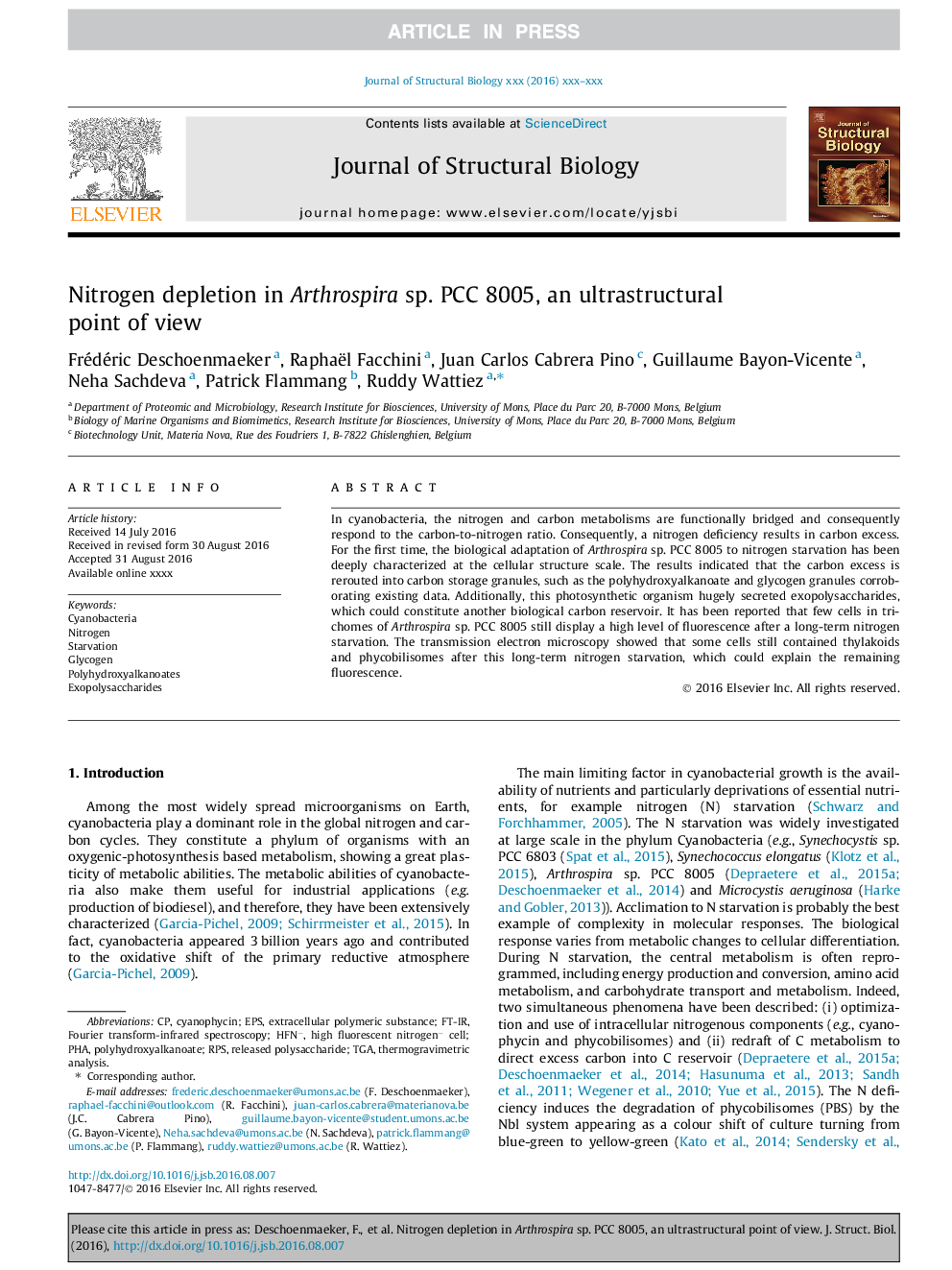| Article ID | Journal | Published Year | Pages | File Type |
|---|---|---|---|---|
| 5591655 | Journal of Structural Biology | 2016 | 9 Pages |
Abstract
In cyanobacteria, the nitrogen and carbon metabolisms are functionally bridged and consequently respond to the carbon-to-nitrogen ratio. Consequently, a nitrogen deficiency results in carbon excess. For the first time, the biological adaptation of Arthrospira sp. PCC 8005 to nitrogen starvation has been deeply characterized at the cellular structure scale. The results indicated that the carbon excess is rerouted into carbon storage granules, such as the polyhydroxyalkanoate and glycogen granules corroborating existing data. Additionally, this photosynthetic organism hugely secreted exopolysaccharides, which could constitute another biological carbon reservoir. It has been reported that few cells in trichomes of Arthrospira sp. PCC 8005 still display a high level of fluorescence after a long-term nitrogen starvation. The transmission electron microscopy showed that some cells still contained thylakoids and phycobilisomes after this long-term nitrogen starvation, which could explain the remaining fluorescence.
Keywords
Related Topics
Life Sciences
Biochemistry, Genetics and Molecular Biology
Molecular Biology
Authors
Frédéric Deschoenmaeker, Raphaël Facchini, Juan Carlos Cabrera Pino, Guillaume Bayon-Vicente, Neha Sachdeva, Patrick Flammang, Ruddy Wattiez,
